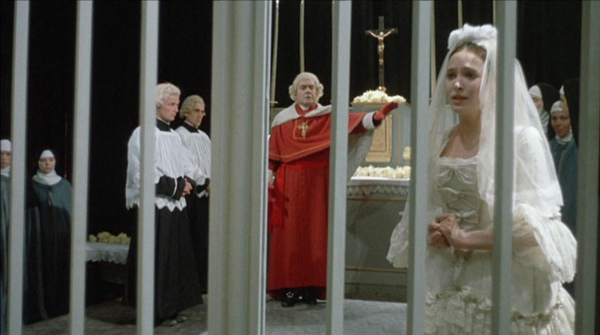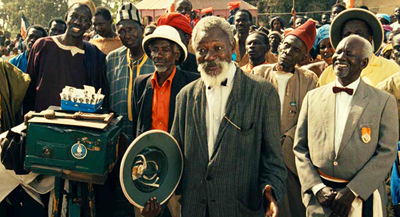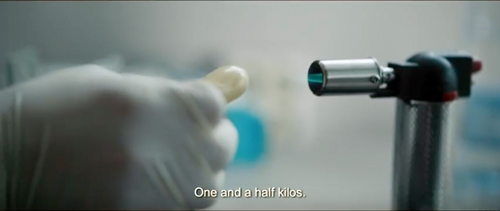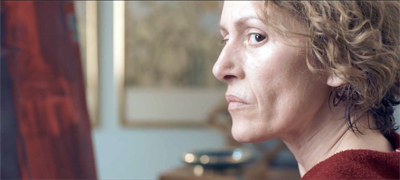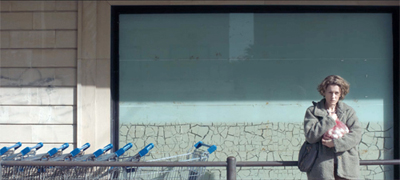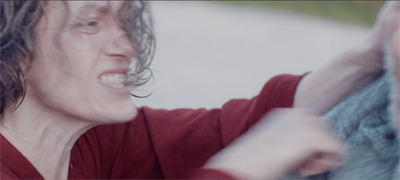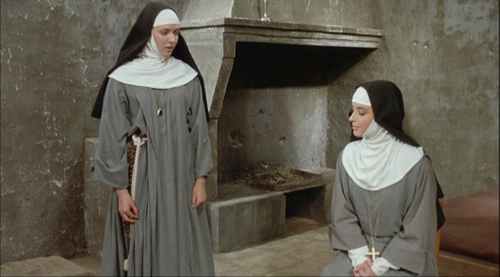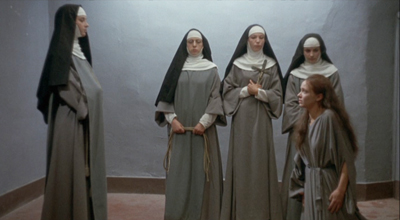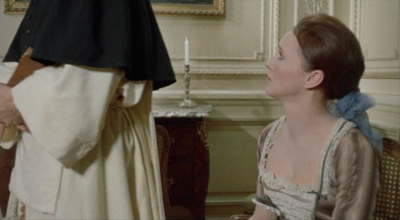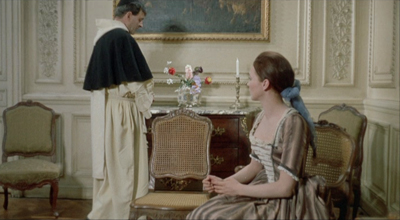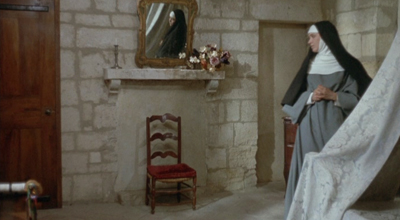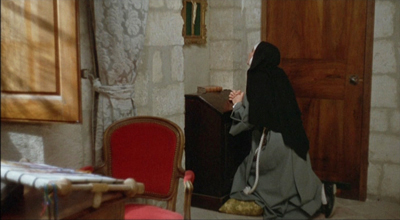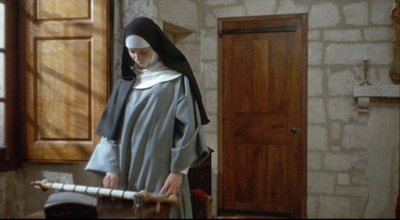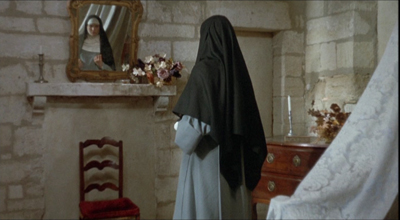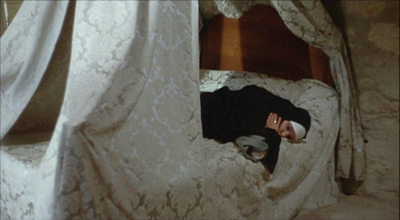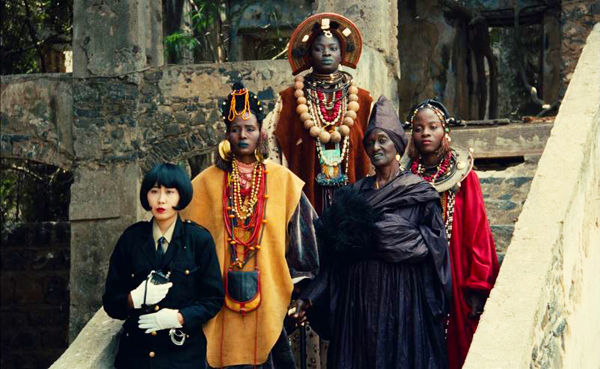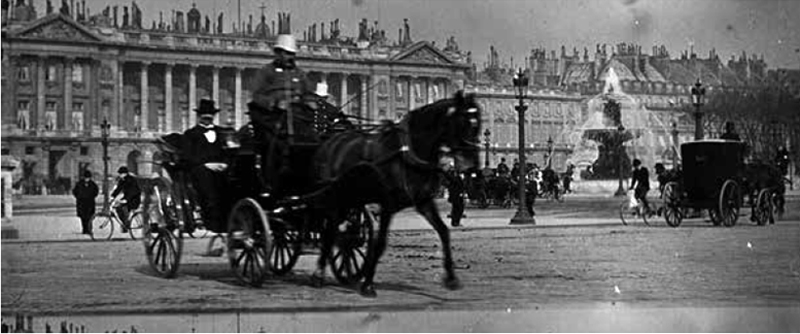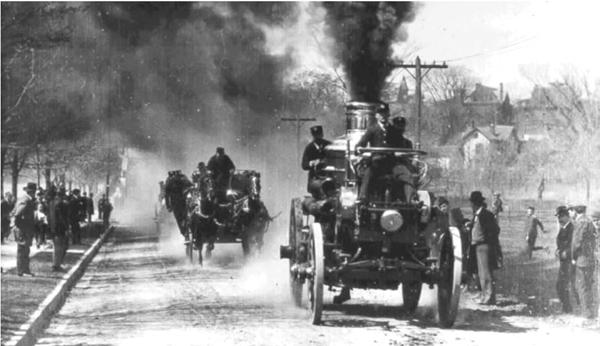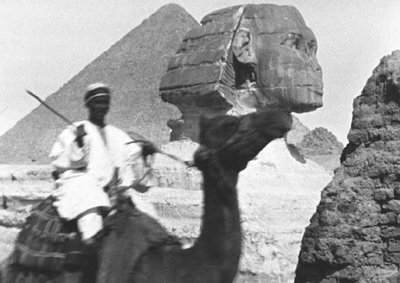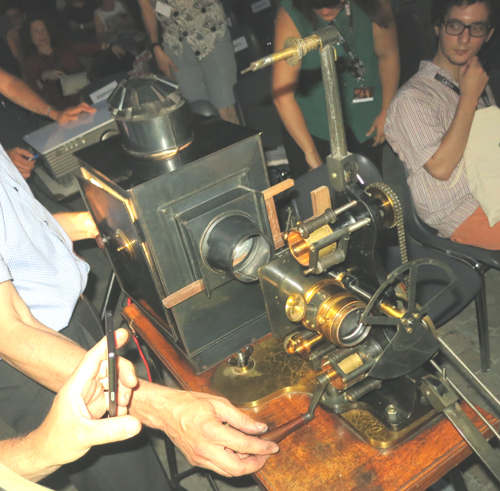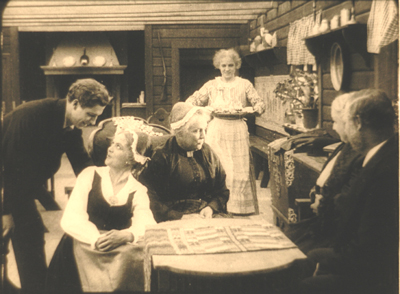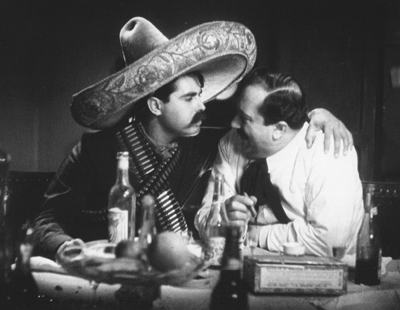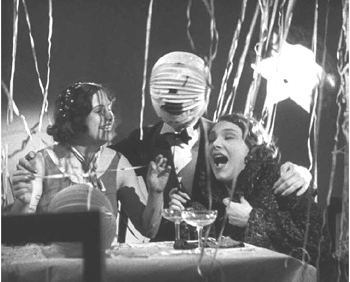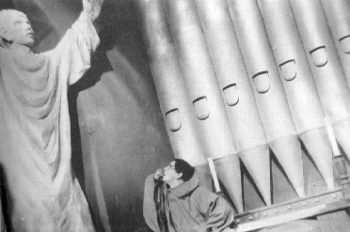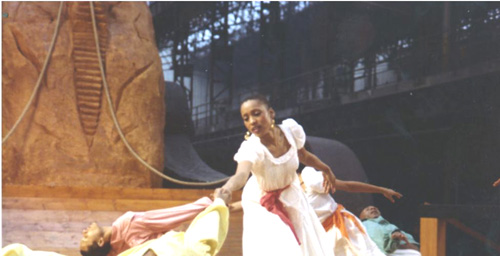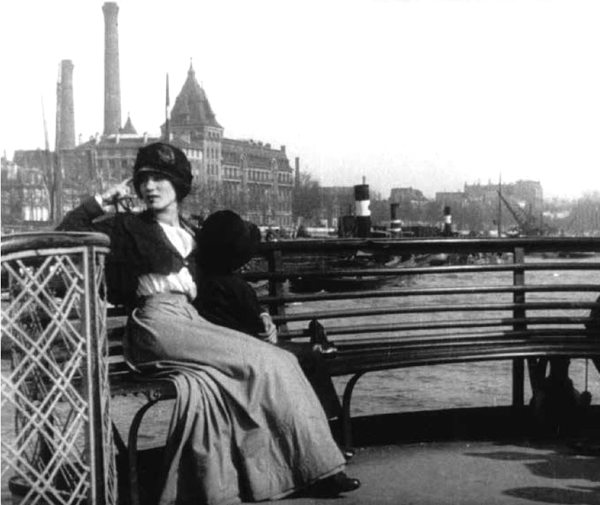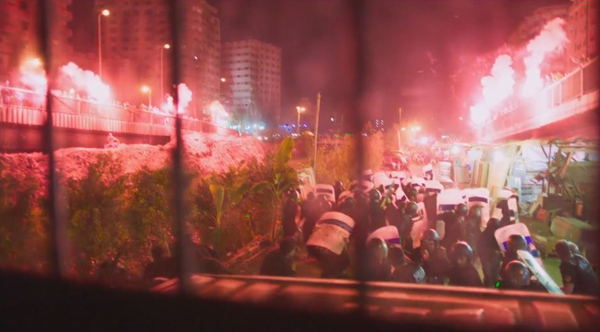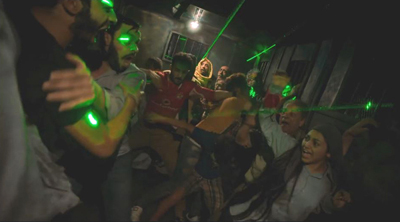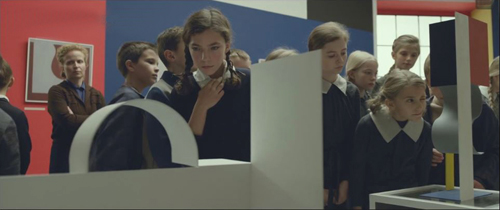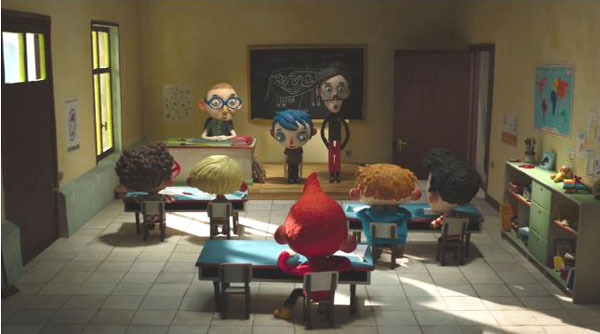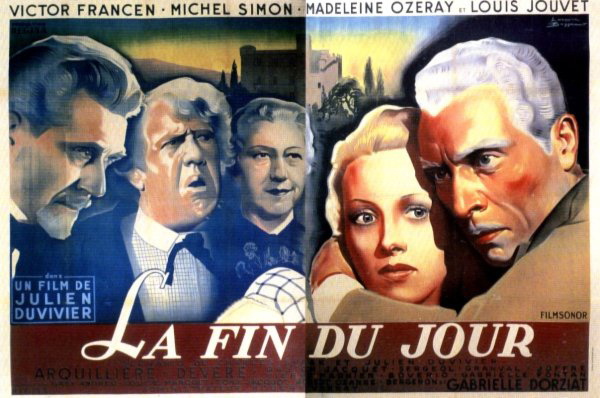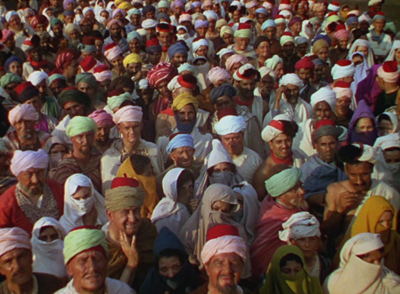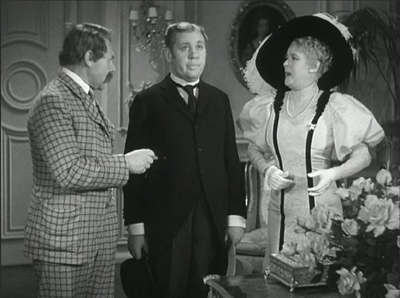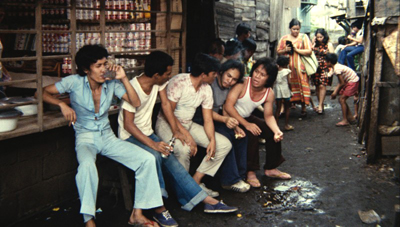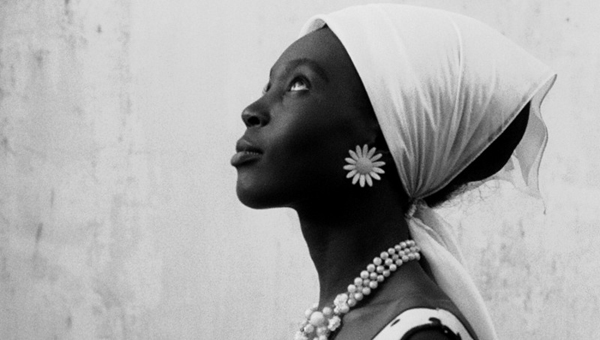Archive for the 'National cinemas: Africa' Category
Wisconsin Film Festival: Four for the road
Suzanne Simonin, La religieuse de Denis Diderot (1966).
The Wisconsin Film Festival is over, and already we’re looking forward to the next one. In the meantime, here are our last thoughts on some films that impressed us.
Kristin here:
Dürrenmatt in Dakar
Hyenas (1992).
Senegalese director Djibril Diop Mambéty is known mostly for his two feature films, Touki Bouki (“The Hyena’s Journey,” 1973) and Hyenas (1992), and less so for a handful of shorts. Though unable to direct for long stretches of time, Mambéty, who died of cancer in 1998, has been well-served by preservationists. In 2013, Touki Bouki was released by the Criterion Collection in a box set of restorations by Martin Scorsese’s World Cinema Project. Now the Cinémathèque Suisse has sponsored a 4K restoration of Hyenas. As the echoes in the two titles suggests, Hyenas was intended to be the second film in a thematic trilogy about the corruption of ordinary people by greed. The third film, Malaika, was planned, but Mambéty’s early death intervened.
Hyenas is based on Swiss playwright Friedrich Dürrenmatt’s dark 1956 comedy, Der Besuch der alten Dame, known in English as The Visit. The film follows the story of the original fairly closely, at least in the play’s first two acts.
The action is set in the village of Colobane (Mambéty’s hometown, where Touki Bouki was also set). The village has fallen on hard economic times, and the genial local shopkeeper, Dramaan, helps keep the place going by extending credit to his regular customers. City officials announce the imminent arrival of Linguère Ramatou, a Colobane woman who left the village and has become extremely wealthy. Dramaan, who had courted Ramatou in their youth, is delegated to greet and butter her up (above). She, however, accuses him of having impregnated her and refused to confess to being her baby’s father. Forced to go abroad, she became a prostitute, was severely maimed in a plane crash, and ended up rich. (How is never explained). Now she promises the villagers great financial aid if they will agree to kill Dramaan.
Although the mayor indignantly refuses, Dramaan soon notices that his fellow citizens are buying luxurious goods that they should not be able to afford. He futilely tries to get local officials to protect him from assassination. All this is played for bitter comedy by an engaging cast of non-professionals. The thematic point is made clear, especially when Mambéty intercuts a pack of hyenas lurking in the nearby brush with a mob of locals who prevent Dramaan from fleeing the town.
It helps to know something about the setting, which would be familiar to Senegalese audiences. The film gives the impression that Colobane is a remote country village. In fact it is a small arrondissement of greater Dakar, a major port on the west coast of Senegal. In a lengthy overview of the director’s life, including an interview with Mambéty shortly before his death, N. Frank Ukadike explains:
The Colobane of Hyènes is a sad reminder of the economic disintegration, corruption, and consumer culture that has enveloped Africa since the 1960s. “We have sold our souls too cheaply,” Mambéty once said. “We are done for if we have traded our souls for money. That is why childhood is my last refuge.” But what remains of Colobane is not the magical childhood Mambéty pines for. In the last shot of Hyènes, a bulldozer erases the village from the face of the earth. A Senegalese viewer, one writer has claimed, “would know what rose in its place: the real-life Colobane, a notorious thieves’ market on the edge of Dakar.”
The last shot is startling, as it reveals for the first time (at least to non-Senegalese viewers) that Colobane is located right up against a city. Possibly in Mambéty’s childhood it was a village later absorbed by the spread of Dakar. It’s not clear from the film when the action is taking place, although Ukadike suggests that it must be in the 1960s or later. The implication of the final shot is that the corruption of the villagers is as much an urban problem as a rural one–if not more so.
The restoration has resulted in vibrantly colorful images that emphasize the indigenous costumes, particularly of Ramatou and her entourage (see bottom). Metrograph is releasing the film theatrically in the US, and with luck a Blu-ray will eventually make it more widely available.
David here:
Anomalies in the space-time continuum
Vultures (2018).
Almost from the start, popular moviemaking has played tricks with linear time and space. Edwin S. Porter’s Life of an American Fireman (1903) contains both a dream and editing that replays key actions from two viewpoints. The more developed silent cinema explored flashbacks, subjective viewpoints, and other strategies. By the 1940s, filmmakers around the world were trying these tricks in sound movies, all seeking to enhance curiosity or suspense or surprise.
Most of the movies that play with space and time resolve the uncertainties clearly. The opening of Mildred Pierce skips over important moments without telling us, but by the end a flashback fills them in. This sort of gamesmanship has remained a permanent resource of mainstream cinema, especially in genres that rely on crime and mystery. Think of Pulp Fiction or Memento or The Usual Suspects, or more recently Identity, Side Effects, or the many heist movies that conceal crucial parts of the plan.
Börkur Sigpórsson’s debut feature Vultures is a good example of a conventional crime film made more intriguing by the way it’s told. The basic story is formulaic. An Icelandic real-estate developer needs to replace money he’s embezzled, and so sets up a drug-smuggling deal. He enlists his ex-con brother Atli to help the mule, a Serbian woman named Zonia, get through airport security. After that, Zonia has to be sequestered until she evacuates the pellets of cocaine she’s swallowed. In the meantime, Lena the policewoman gets on the trail. The whole scheme falls apart when Zonia collapses and Atli starts to take pity on her, while Erik decides to get the pellets by any means necessary.
This straightforward arc of action is presented in fragments that jump among time frames. Before the credits, we see Zonia hesitantly gulping down the pellets, getting sick on the flight into Reykjavík, and hiding in a toilet. She’s frightened when she hears a knock on the door.
Flash back to follow Atli and Erik planning the smuggling scheme. Then, via brief replays, we’re back with Zonia swallowing the pellets, Zonia on the plane (with Atli now revealed as a fellow passenger), and Zonia bolting to the toilet. He’s the one knocking on the door.
This sort of back-and-fill pattern sharpens our interest by delaying the revelation of who’s knocking on the door, while also filling us in on the brothers’ scheme. The interpolation also allots some sympathy to Atli. In the flashback he’s shown visiting his drug-devastated mother and trying to reassure his wife that he’s going to be providing for her and his son. Soon we see him distracting the airport police so that Zonia can pass through freely. The deal seems to have come off. All they have to do is retrieve the pellets.
Abruptly we skip far ahead in time to reveal a bit of the end of the story. I won’t provide a spoiler, but let’s just say that whatever certainty we gain about the outcome is provisional and partial. Still, with this small anchor in Now, the narration doubles back again through a long flashback that traces the unraveling of Erik’s scheme.
As often happens with flashback construction, the time-shifting in Vultures has a double impact. It teases us with hints about what will happen, and it forces us to concentrate on how and why it happens. (Something similar is at work in Duvivier’s Lydia, which I analyze in this month’s “Observations on Film Art” installment on the Criterion Channel.) Told more linearly, Vultures wouldn’t have been so engaging, I think. Nor would it have so sharply focused our concern about the characters’ decisions. And that crucial glimpse of the future allows us to hope that Zonia’s fate isn’t what it would have seemed to be if her story had been presented in 1-2-3 order. As usual, the how of storytelling is as important as the what.
During the 1950s, films not only fractured their action in challenging ways but also refused to resolve all the questions that were raised. We might not fully understand everything that happened. This strategic ambiguity has been central to what’s sometimes called “art cinema,” and is nicely showcased in Pause, another debut feature. If Vultures plays hob with the crime movie, Cypriot director Tonia Mishiali gives us a jagged domestic drama, a diary of a going-mad housewife.
Elpida is falling apart. The darkly comic opening scene, with a doctor ticking off a virtually endless list of her ailments, portrays her as enervated and beaten-down. How she got that way becomes clear. Her husband Costas shovels in food in angry silence. He watches soccer on their main TV, while she has to watch her violent crime videos with headphones. He comes and goes as he pleases; she steals time to attend a painting class or have coffee with a neighbor. When he decides to sell her car without further discussion, and when a young contractor comes to repaint their apartment house, Elpida dares to imagine life without the lout she married.
Imagine is the key word. From her drab routines we pass without warning into fantasies of resistance, escape, and payback. At first, the visual narration makes clear that these acts of rebellion are wholly in her mind. As the film goes along, however, the boundary gets fuzzy. Is the breezy workman making a pass at her, or is she just wishing for it? Is she really drugging Costas’ coffee? And is murder in the offing?
The cinematography won’t tell us. Like Vultures, Pause presents its story through a now-standard blend of planimetric framings and a “free-camera” handheld style that suggests nervous urgency. The fantasies are treated through both techniques.
A woman’s domestic discontents, projected through fantasy, has been a mainstay of cinema since at least Germaine Dulac’s Smiling Madame Beudet (1923). Here, Mishiali’s careful pacing of Elpida’s household chores establishes a solid rhythm that’s broken by the imaginary moments. Like many modern films, the drama builds up by immersing us in the characters’ routines and then disturbing them with sudden outbursts. Yet the climax is remarkably quiet, further teasing us about what may or may not have happened. In any case, by the end, Elpida may be liberated. Yet her final laughter, echoing through the end credits, doesn’t feel especially jubilant.
Get thee from a nunnery
Suzanne Simonin, La religieuse de Denis Diderot was Jacques Rivette’s second feature. In 1962 he submitted a screenplay to censorship authorities but was told that if the film were made it would probably be banned. After another try in 1963, a third version was cautiously accepted, with the warning that it might well be forbidden to viewers under 18.
Shooting began in September of 1965. Catholic groups immediately objected. After a public outcry, in which Godard called on Minister of Culture André Malraux to intervene, there was a screening at the 1966 Cannes Film Festival. The film wasn’t released in France until July of 1967. Usually known as La religieuse (The Nun), it’s gone largely unseen in America. We were lucky to screen the sparkling 4K version that Rialto is now distributing.
The story is set in the years 1757-1760. Suzanne, illegitimate daughter of a prominent household, is parked in a convent, like many women who had no other life chances. Her first Mother Superior, who treats her with affection, dies and is succeeded by a harsh younger woman. Suzanne loves God but resists the rigid discipline. She’s beaten and starved, denied access to her Bible, and believed to be possessed.
She’s rescued by church officials and a kindly lawyer, who oversee her transfer to a very different convent. That’s run by a sexy, permissive Mother Superior who seems anxious to bed our heroine. Suzanne finds the license of her new home as disquieting as the asceticism of the old one. In the end, she escapes with a priest who abandons his vows. Soon she’s on her own in a grimy secular milieu.
No wonder the French church was outraged. True, Diderot’s novel was a classic, and Rivette had already mounted the story as a play. But on film the revelation of ecclesiastical corruption was vivid and shocking, and the presence of New Wave star Anna Karina gave it undeniable prestige. Popularity, too: It attracted more than 2.9 million spectators, making it the ninth most successful release of the year. (Films by Godard, Rohmer, Bresson, Bergman, and Chabrol drew fewer than half a million.) Rivette’s first feature, Paris nous appartient (1961) had drawn only about 29,000. As often happens, creating a scandal proved good for business.
Seen today, La religieuse is hard to imagine as a mass-audience hit. Rivette presents his inflammatory plot with a calm austerity. The dominant colors, at least for the first seventy minutes or so, are shades of beige, brown, white, and black. Shot in very long takes, usually at a distance from the action, the scenes are confined largely to chapels, corridors, and sparsely furnished rooms. La religieuse exemplifies what one wing of Cahiers du cinéma called “classical” direction. As a critic, Rivette admired Hawks, Preminger, Rossellini, the American Lang, and late Dreyer for their sober, unemphatic staging of performances. In place of flashy angles and aggressive cutting, mise-en-scène should center on expressive bodies and faces captured from a respectful distance.
In a 1974 interview, Rivette explained that his most proximate influence was Mizoguchi Kenji–a director who made the restrained, long-take scene central to his style. While most scenes in La religieuse are cut up a little, Rivette seldom moves nearer than medium-shot distance. He uses close-ups with the same parsimony that Mizoguchi displays. Most directors would have cut in to a closer view of Suzanne when, kneeling, she’s asked to pray to Jesus, but Rivette obstinately makes her gesture part of a nearly two-minute shot.
This might seem a stagy approach, especially if you remember Rivette’s interest in varieties of theatre. But like other Cahiers critics, he believed that “classical” filmmaking harbored qualities that also kept cinema “modern,” on the aesthetic and moral edge.
In the abrupt editing of the long takes in Dreyer’s Gertrud (1964), Rivette found a revival of the powers of montage. Dreyer didn’t hesitate to interrupt moving shots. Rivette felt that the film exploited “tantalizing cuts, deliberately disturbing, which mean that the spectator is made to wonder where Gertrud ‘went’; well, she went in the splice.”
In La religieuse, most cuts within scenes are axial, not reverse angles, and they often mismatch action in ways that break the flow of the long takes.
At other moments, Rivette’s editing subjects his distant shots to ellipses that recall Godard’s jump-cuts and Resnais’ experiments in Muriel. We get space-time anomalies more abrasive than those in Vultures and Pause.
Suzanne is in her cell, fretfully pacing. She pauses and, thanks to a cut, seems to look at herself at prayer.
She drifts to her needlework, and suddenly a cut takes her back to the other side of the room.
While she looks in the mirror, the camera backs up and, continuing over a cut, arcs to the right to reveal that she’s already flung herself onto her bed.
Where did Suzanne go? Well, she went in the splices.
It’s wonderful to have this quietly astonishing film available again. The ever-reliable Kino Lorber is bringing out a Blu-ray edition next month, with commentary by Nick Pinkerton, a critical essay by Dennis Lim, and a new documentary about the production. Don’t you want one? I bet you do.
Thanks as usual to the coordinators of our film festival–Jim Healy, Ben Reiser, Mike King, and Zach Zahos–as well as their colleagues and the hordes of cheerful volunteers who kept everything running smoothly.
The information about Colobane from N. Frank Ukadike is from his article on California Newsreel. For a trailer of the restored Hyenas, see here.
The information on La Religieuse‘s censorship struggles comes from Jean-Michel Frodon, L’Âge moderne du cinéma français: De la Nouvelle Vague à nos jours (Flammarion, 1995), 149-151. Rivette’s comments on Mizoguchi’s influence are in this Film Comment interview from 1974. His remarks on Gertrud are part of a 1969 Cahiers du cinéma panel discussion, “Montage,” translated in Rivette: Texts and Interviews, ed. Jonathan Rosenbaum (British Film Institute, 1977), 86-87. The conversation is available online at DVDBeaver. I derived attendance figures from Simon Simsi, Ciné-Passions: 7e art et industrie de 1945 à 2000 (Dixit/CNC, 2000), 46-47.
What’s an axial cut? Glad you asked. Kurosawa uses them (here too), as does Eisenstein and his Soviet peers and French avant-gardists. Silent cinema has plenty, but so do the films of Wes Anderson and John McTiernan. And The Simpsons, often.
Our first full day of the festival opened with a screening of Ozu’s Good Morning (Ohayo), selected by guest Phil Johnston, and the final show a week later presented Jackie Chan’s Police Story. (The first is already available in a Criterion disc, the second is coming soon.) Now that’s what I call a film festival.
Hyenas (1992).
Ritrovato 2017: An embarrassment of riches
Place de la Concorde (somewhere between 1888 and 1904)
KT here:
David’s recent entry stressed the world-wide scope of offerings here at Il Cinema Ritrovato. The time period covered is even broader–this year as broad as it could possibly be. The final night’s film in the Piazza Maggiorre will be Agnès Varda and JR’s prize-winning documentary straight from this year’s Cannes festival, Visages Villages, with Varda here to introduce it. Yesterday we saw a work that may have been created before the cinema itself had been properly invented.
The earliest years
Somewhere in the time period 1888 to 1904, French scientist Etiennes-Jules Marey created a huge photographic format, a filmstrip 88 mm wide and 31 mm high. He exposed a series of images along this broad strip but never intended to project them as a film. As with much of Marey’s work, these high-quality photographs were tools to allow him to analyze movements, in this case those of humans and horses in the Place de la Concorde.
The National Technical Museum in Prague has scanned this series of frames to create a digital copy that can be projected in motion. The results, lasting only 45 seconds, has a clarity and detail that seems to rival that of Imax film. (The image at the top only hints at the effect.) We watched the piece four times and would have been glad to see it at least as many more.
A major thread running through the festival is the year 1897, which, although only the second year of the established film industry, already saw the making of many beautiful and intriguing films. Among the ones shown here were films made by the American Mutoscope Company (later known under the more familiar name, American Mutoscope and Biograph) and British Mutoscope and Biograph. These films, made to be shown in both peepshow machines and projected onto screens, utilized a 68 mm format.
Such films have mainly been seen in poor prints that give an impression of primitive crudeness. Thanks to preservation work on collections in the EYE Filmmuseum and the BFI-National Archive, the richness and clarity of these films have become evident, and they look anything but primitive. One American film (above) is Jumbo, Horseless Fire Engine, credited to William Kennedy-Laurie Dickson himself, provides what must have been an exciting variant on the many films featuring horse-drawn fire engines racing along streets.
One of the Lumière company’s most prolific traveling cameramen was Alexandre Promio. I was naturally intrigued by series he filmed in Egypt in 1897. One thing that struck me about 28 films in the program was how few featured famous tourist attractions and truly picturesque images. True, Les Pyramides (vue générale) shows one of the most familiar ancient sites in the world, the Sphinx against the great pyramid of Khufu.
Most of the rest of these brief films are remarkably mundane, however. Place de la Citadelle shows an open space with a nondescript building in the distance rather than the two main attractions of the Citadel, the Mosque of Mohammed Ali and the spectacular view out over the city. Village de Sakkarah (cavaliers sur ânes) shows fellahin riding donkeys in modern Mit Rahina, but in the background the colossal quartzite statue of Ramesses II lies on the ground (where it still lies today, covered by a shelter). It is a beautiful statue, visited by nearly all tourists, and yet in the film it is merely a distant, vague shape, identifiable only to those who are familiar with it.
Numerous other views are moving, taken either from trains and showing ordinary industrial buildings or from boats, showing mainly palm trees. The collection leads one to speculate what prompted Promio to choose his subjects.
I believe the tradition of showing films in the open air of the Piazzetta Pier Paolo Pasolini (the courtyard of the Cineteca di Bologna) on carbon-arc projectors began in 2013, which I reported on it. This popular feature has expanded, with three programs this year. The first centered around Addio, Giovenezza!, which David described in his entry. The second was particularly special, with a five early shorts ranging from 1902 to 1907 shown on a vintage 1900 projector, hand-cranked by Nikolaus Wostry of the Filmarchiv Austria. The films were charming, but the star of the show was the projector. It looked like a magic lantern dressed up with special attachments that allowed for moving pictures, including a shutter sitting in front of the lens rather than within the body of the lantern. Indeed, the thing looks like a magic lantern converted into a film projector.
This projector cast a much smaller image than the later carbon-arc projector used for the second part of the show. The image had rounded corners and it flickered distinctly. At times, despite Wostry’s obvious expertise at hand-cranking, the image would briefly go to black. Watching this presentation, it became easy to grasp how early audiences might have been constantly aware of the artifice, the machine, creating these images and have marveled at any sort of moving photographs that were cast on the screen before them. It was a magical few minutes, making almost real the section of the program entitled “The Time Machine.”
Classics of 1917
Although there was some thought of ending the Cento Anni Fa programs once the feature film became established, that has fortunately not been done. Instead, a mixture of shorts and features continues to celebrate the cinema of a century ago. Some of the Italian films David wrote about came from that year.
I had the chance to see two masterpieces from that year back to back: André Antoine’s Le coupable and Victor Sjöström’s The Girl from Stormycroft. Both center around the subject of women seduced and left pregnant by their selfish lovers.
I had never seen Le coupable. Antoine is often referred to as a naturalist theatrical director, but going by Le coupable and La terre (1921), he is equally a major film director in the realist tradition, though his output consisted of only nine films from the brief period 1917 to 1922.
While La terre was filmed largely in the countryside, Le coupable was shot in the streets of Paris, and many of its interiors seem to be set in real rooms. Antoine manages to combine the gritty realism of his lower-class milieux with beautiful cinematography (see bottom image). The story takes the unusual form (for its day) of a lengthy series of flashbacks framed by a trial of a young thief and murderer. The past does not unroll from witnesses’ testimony, however, but from one of the presiding judges’ lengthy confession that he is the father of the accused and had abandoned the boy’s mother. The situation is pure melodrama, but Antoine’s light touch and feel for the settings of the action make it a masterpiece.
The Girl from Stormycroft has the distinction of being the first adaptation of a novel by internationally popular author Selma Lagerlöf, whose work was to be the basis for several classics of the Swedish silent cinema, including The Phantom Carriage and Stiller’s The Saga of Gõsta Berling (1924). It is set in the countryside, in a group of small villages. Helga, the heroine, has been seduced by a married man who refuses to acknowledge her child as his own. In a key trial scene, she gives up her suit against him to prevent his committing a sin by swearing to a lie on the Bible. This gains the admiration of a well-off and kind young man, Gudmund, who persuades his mother to take Helga on as a maid. When his fiancée and her parents visit Gudmund’s family, they express disgust at her presence and depart (above), leaving Gudmund is left with doubts about his upcoming marriage.
Early sound films
Il Cinema Ritrovato’s programs offer an opportunity to sample early sound films from a much wider range of countries than usual. Gustav Machaty, best known for Ecstasy (1933), made From Saturday to Sunday in 1931. It follows a pair of working girls who go out to a ritzy nightclub with two wealthy men, intending to exploit the two for a lavish night out while avoiding their sexual demands.
This proves more difficult than they expected, and we end up following one of the pair as she is stranded late at night in the pouring rain. As the title suggests, the action is a slice of life, lasting less than 24 hours. Machaty manages to blend the visual style of the late 1920s with a firm grasp of sound technology. The result is an entertaining if rather conventional tale.
Mexican filmmakers seem to have proved equally adept at taking up sound. The program notes for the program “Rivoluzione e avventura: Il Cinema Messicano dell-Epoca d’Oro” point out that Mexican production burgeoned in the 1930s, going from one feature in 1931 to 21 in 1933.
The earliest film in this thread, El Compadre Mendoza (1933), is a technically and stylistically impressive film, looking like a Hollywood film of the same era. It’s part of a trilogy about the Mexican Revolution, coming between director Fernando de Fuentes’ El prisionero 13 (1933) and Vámonos con Pancho Villa (1935), though it is quite comprehensible and enjoyable on its own.
The irony of the title is that the protagonist, a jovial, sociable plantation owner, is professing loyalty to both sides, and for years he manages to live a pleasant life with his family and staff on their large hacienda. The film is remarkable in portraying the Revolution almost entirely offscreen. The narrative sticks mostly to Mendoza’s house, and we gauge the progress of the fighting purely through a series of sequences in which either revolutionary or government troops ride up the long, tree-lined road to the house. There Mendoza and his household provide a bit of socializing, putting up an effective façade of loyalty to whichever army is present at the time.
Mendoza develops a particular friendship with Felipe, a Revolutionary general (above), who also attracts Mendoza’s young wife in what develops into a lengthy unconsummated romance. Inevitably Mendoza’s juggling of the two sides collapses as he is forced to help one of them against his will.
For me the most unexpected discovery of the festival was the second Mexican film, Two Monks (1934). It is considered the first in the Mexican Gothic genre. It was inspired by the Spanish-language version of Dracula (directed in 1931 by George Melford for Universal), as well as by German Expressionist films.
There are no monsters in the film. Instead, a frame story set in a monastery that looks straight out of Murnau’s Faust (1926) introduces a young monk, Javier, who has gone mad. He attacks another monk, Juan, with a crucifix and confesses to the prior that he did so because Juan had committed a terrible crime. A lengthy flashback lays out the story of Javier’s love for Ana and his eventual rivalry with Juan. In the second half, Juan also confesses, and the story is repeated from his point of view. Scenes we saw earlier are replayed, often starting at an earlier point or ending at a later one, in a way that alters our understanding of the two monks’ past relationship. The result is not a Rashomon-type situation, for the two men agree on the events they describe, disagreeing only on the implications of those events.
It’s a remarkable narrational technique for this early in film history. The atmospheric claustrophobia created by the small cast (no passers-by are seen in the brief street scenes and no servants appear in the houses) and of dread created by the sets and the dissonant music of the climactic scene would bear comparison with the horror films of Universal and Hammer.
Restorations that make me feel old
Film restoration has been around for decades, but at some point within the several years I noticed that an increasing number of films were being restored were ones that I had seen when they first came out or shortly thereafter. Modern classics restoration wasn’t just for silent films and movies from the golden studio era. Now they’re for modern classics: The Graduate, Belle du jour, Women in Love, Blow-Up, and Day for Night (not to mention the restorations shown at Il Cinema Ritrovato in past years).
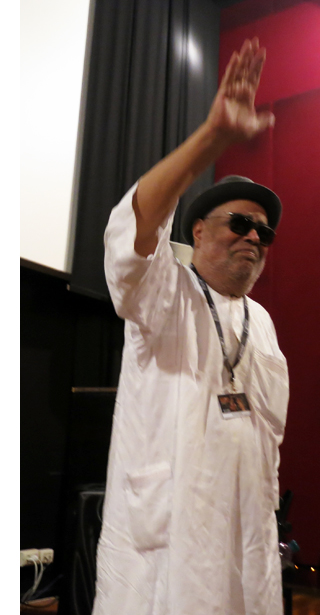 My first thought is, why do such recent films need restoration? Answer: maybe they’re not as recent as they seem to me. My second thought is, haven’t the studios realized that they need to take care of their films? Answer: Yes, to some extent, given the vital work done by studio archivists like Grover Crisp and Shawn Belston. Still, will There Will Be Blood be neglected until it needs restoration in twenty years’ time?
My first thought is, why do such recent films need restoration? Answer: maybe they’re not as recent as they seem to me. My second thought is, haven’t the studios realized that they need to take care of their films? Answer: Yes, to some extent, given the vital work done by studio archivists like Grover Crisp and Shawn Belston. Still, will There Will Be Blood be neglected until it needs restoration in twenty years’ time?
Among the relatively recent films presented in restoration here is Med Hondo’s West Indies (1979). The Film Foundation’s World Cinema Project undertook to restore a number of films by Hondo, a Mauritanian actor and director and one of the most important directors from the African continent.
West Indies is a remarkable film, a musical on the history of French slave-owning in its Caribbean colonies. Inside an empty factory Hondo built a large set depicting the upper and lower decks of a slave ship. The various sections of this ship provide stages upon which scenes, anything from a 1968 demonstration in the streets of Paris to a slave auction hundreds of years before. Five actors representing colonial interests, including a black man who cooperates in order to maintain his position as a figurehead governor, take similar roles throughout the action.
It’s a lively, entertaining film, done in color and widescreen, as well as a maddening look at French complacency and casual cruelty. Most of the musical numbers are dances rather than songs, with Hondo himself having choreographed several of them.
Hondo, now 81 and reportedly seeking backing for another film, was present at the festival and introduced the screening of West Indies that we attended. He was visibly moved by the chance to show this little-known work to an appreciative audience and thoroughly won us over during his brief presentation. With luck we will see a tenth film from him.
Thanks to Guy Borlée for his assistance with this blog, and to the programmers and staff of Ritrovato for another dazzling year. You can download the entire festival catalogue here.
Kelley Conway reviewed Visages Villages at Cannes for our blog.
Le coupable (1917)
Wisconsin Fim Festival: An unexpected gem, a Zucchini, and a farewell
Clash (2016)
Kristin here:
Three more films from this year’s Wisconsin Film Festival.
Clash (Eshtebak, 2016)
David and I were intrigued by the festival’s program notes describing Egyptian director Mohamed Diab’s second feature, Clash, as taking place with the camera entirely confined to the interior of a police paddy-wagon. This kind of limitation can be a fruitful device, as it was in the Israeli film Lebanon; there the action took place inside a military tank. Clash turned out to be a real discovery, the best film I saw at the Festival (putting aside A Quiet Passion, which we had already seen at the Vancouver International Film Festival.).
Diab’s paddy-wagon has the advantage of rows of barred windows and a door, so that we can frequently see what’s happening outside. The film is set in the summer of 2013, when there were protests, often turning violent, in the wake of the ouster of President Mohamed Morsi and his replacement by the current president, Abdel Fattah el-Sisi. The truck moves through Cairo, encountering waves of such protests, and it gradually fills with a collection of people with various religions, beliefs, and cultures–supporters of Morsi’s party, the Muslim Brotherhood; others who oppose him; Christians; a homeless man; a nurse; and two journalists–with arguments and violence erupting inside the vehicle as well as outside.
Diab had to tread a fine line in his depiction of these people, since his basic theme is that they all must learn to cooperate to some extent if they hope to survive the baking heat, tear gas, gunfire, police bullying, and the anger of the mobs outside the truck. Officially the Muslim Brotherhood is considered a terrorist organization in Egypt, though Diab manages a fairly even-handed treatment of its members and supporters. Remarkably the censors did not require any changes to the film.
Just as remarkably, Diab was able to stage huge, convincingly terrifying riots in Cairo’s streets and highways (above). In a brief interview at Cannes last year, where Clash was shown in the Un Certain Regard section, he was asked if the shoot was difficult.
Very. You are risking your life because people might mistake the shoot for a protest, or might mistake you for the police. And there are haters of both, who can shoot you. It took us months of preparation. Egyptians to whom I’ve shown the film are blown away because they know that what we did is almost impossible.
He makes similar remarks in a question-and-answer session at the London Film Festival; his discussion of the film’s techniques comes from about 9:30 to 13:50.
The characters in the truck are constantly in danger, both from each other and from the rioters, and the action is absolutely riveting. There are a few lulls to vary the pace and to allow the prisoners to deal with their wounds and try to work out a strategy to protect themselves, but otherwise the suspense is maintained at a high level. A climactic scene in which rioters attack the truck, flashing laser pointers into it and trying to tip it over is handled, as Variety‘s review put it, with “brilliantly choreographed pandemonium.”
Clash was a huge success in Egypt. It was released in France in September and is already out on region 2 DVD (French subtitles only) there. Its festival life seems to be drawing to a close. It’s due for theatrical release in the UK and Ireland on April 21 and presumably will come out on Blu-ray and/or DVD. You can get a good sense of the film from the online trailers, the European one and especially the Egyptian one, though the film is not nearly so fast-cut.
My Life as a Zucchini (Ma vie de courgette, 2016)
2016 was a good year for animation. Kubo and the Two Strings, The Red Turtle, Moana, and Finding Dory were excellent as well. (I thought Zootopia was overrated.) Add My Life as a Zucchini to that list. This being Madison and the Wisconsin Film Festival being a university-sponsored event, we saw it with French subtitles rather than dubbed.
The style of the film, with its bright colors and cute, big-headed characters (above and at the bottom), makes it seem aimed at children, and the story is presented almost entirely through the viewpoints of Zucchini and the other children he meets. Yet children younger than teenagers would probably find parts of it incomprehensible or disturbing. The boys indulge in naïve but somewhat explicit speculation about sex. Zucchini’s beer-swilling mother apparently dies in an accident that he inadvertently causes, though this happens offscreen. He is taken by a sympathetic policeman to a small home for young children in the countryside. Not all are orphans, as it is made clear that one girl was taken away from her sexually abusive father and some of the others come from homes ruined by addiction or violence. Zucchini gets bullied and teased before finally being accepted.
All this makes for a strain of melancholy running through the film, but there is considerable humor to counter it, and the ending is happy.
Like Kubo, My Life as a Zucchini is puppet animation. Clearly it was done on a much lower budget, without the laser-printed changeable faces that make Laika’s characters so expressive. Charmingly, if distractingly, the clothes of the puppets occasionally shift positions, betraying the handling by the animators between frames–as when the red star on Zucchini’s T-shirt inadvertently takes on a life of its own. But on the whole, the filmmakers have used simple means to give their figures considerable expressivity.
The nomination of My Life as a Zucchini for the Best Animated Feature Oscar came as something of a surprise. Foreign films do show up in that category, but this one had its widest American release in a mere 53 theaters. It came out on February 24 and is still in 22 theaters, having grossed $286,154 as of April 6. (Presumably that does not count the two WFF screenings; the one we went to was sold out.) The DVD and Blu-ray versions are available for pre-orders on Amazon. The description says that both the original French-language soundtrack and the English-dubbed one are included.
Afterimage (Powidoki, 2016)
Afterimage premiered at the Toronto Film Festical almost exactly a month before the death of director Andrzej Wajda. It deals with the co-founder of Polish Constructivism, Wladyslaw Strzeminski, who helped create the Blok group in Warsaw in 1923. The plot covers only Strzeminski’s last years, but we get a strong sense of his entire career through gallery scenes displaying his work.
Socialist Realism was imposed upon Polish artists after the country came under the sway of the USSR in the wake of World War II. The film’s action starts with Strzeminski’s being fired in 1950 by the Ministry of Culture and Art because he refused to adhere to the doctrine. We see his stubborn resistance and the attempts by his adoring students to help him find respect and other work. Up to his death in 1952, he is oppressed by intransigent officials bent on denying him even the most demeaning jobs.
Reviewers have treated Afterimage with the respect due a veteran auteur late in a six-decade-plus career, but they deem it to lack the energy and appeal of his earlier work. Certainly compared with Wajda’s films of the 1950s and 1960s (we’ve commented briefly on two from the 1960s), Afterimage is a fairly conventional film. It’s beautifully made, as Wajda clearly had a considerable budget to recreate the historical look of Soviet-era buildings and streets of the early 1950s. To anyone unfamiliar with the impact that Socialist Realism could have on the avant-garde artists in the USSR and elsewhere starting in the 1930s, the film provides a vivid example. The film also contains an excellent performance by Boguslaw Linda, perhaps best known as the lead in Kieslowski’s Blind Chance.
Strzeminski, being the victim of persecution from almost the beginning, automatically becomes a sympathetic character. He also lost an arm and a leg in 1916 during World War I. (The budget is on display again in the fact that undetectable special effects removed Linda’s own arm and leg.) It is hinted that if he had been grievously injured in World War II, some allowances might be made, but having it happen during the Tsarist war of the pre-revolutionary era earns him no credit with the officials.
Yet Strzeminski loses some of our sympathy through his treatment of his teenage daughter Nika. She is interested in his art, closely examining the “Neoplastic Room” he helped create in the Lodz Museum–just before it is dismantled and put into storage as part of Strzeminski’s punishement. Nika also tries to help her father, cooking for him and trying to get him to cut back on smoking, but his ingracious rejection of her efforts helps drive her to live in a girls’ dormitory near her school. He remarks matter-of-factly after Nika leaves, “She will have a hard life.”
Our thanks to Graham Swindoll of Kino Lorber for help with this entry. As well, of course we owe a debt of gratitude to the WFF programmers Jim Healy, Mike King, and Ben Reiser.
My Life as a Zucchini (2016)
Il Cinema Ritrovato: The advantages of leaving home
Kristin here-
David and I are in Bologna for Il Cinema Ritrovato. Once again there is an overwhelming choice of films on offer, demanding a patient acceptance of the fact that one cannot possibly see anything close to everything one wishes. Careful planning can only do so much.
If there is anything I have learned from the films in the first half of the festival, it is that one should not leave home. In the earliest surviving Mizoguchi Kenji film, The Song of Home (1925), a talented but impoverished young man accepts the idea that staying in his village is best for both himself and Japan.
Nearly thirty years later, Girls in the Orchard (dir. Yamamoto Kajiro, 1953), the heroine must choose between going to Okinawa with her fiancé or marrying a man who can help her maintain her family’s traditional pear farm. Naturally, she makes the right choice.
The heroine of Ousmane Sembène’s first feature, the pioneering Senegalese film La noire de … (aka Black Girl, 1966) leaves her home country for France and the better life she dreams of, only to find herself virtually imprisoned working as a maid in Antibes.
The lesson is clear, and yet those of us who have ventured from around the world to Bologna are all the better for it.
Color blooms in Bologna
Color films have always featured on the program at Bologna, but this year various processes are on display in more threads than usual. While the past three festivals have offered a lengthy retrospective of early Japanese found films, this year’s it’s early Japanese color films. There are vintage Technicolor prints in one series, restored color from the silent era in several threads, and eye-poppers like Cover Girl among the restorations being shown off by various archives and labs.
The first screening on the opening afternoon of June 27 was The Thief of Bagdad–not the Fairbanks silent but the 1940 British version co-directed by Ludwig Berger, Michael Powell, and Tim Whelan. I must have been one of the few in the vast Arlecchino theatre who had never seen it, even in a faded 16mm print. Some were there to recapture the fond memories of their youth.
As a “vintage” print, it had an odd history. This was not a vintage re-release print, as some of us expected. It stemmed from the 1990s chemical restoration which was subsequently digitally scanned. The images looked like the Technicolor films of my youth (not quite the 1940s, but at least the 1950s). It was a relatively early film using the three-strip Tech process, which had really only reached its ideal form in Hollywood as recently as 1939, with The Wizard of Oz and Gone with the Wind.
This print had the eccentricities of the three-strip process. Some shots had poor registration, with red and green rims around the characters, while others were in perfect alignment. The matte lines for the numerous fantastical effects (flying horse, giant jinn, flying carpet) were very obvious, and the color changed suddenly for every dissolve. The print was probably not a bad indication of what audiences would have seen at the time.
The design certainly took advantage of the color process, with numerous false-perspective sets and costumes carefully arranged to show off the range of bright hues that Technicolor could achieve (above).
As for the film itself, it is extremely charming without being one of the masterpieces of the era. It suffers from having a bland pair of actors as Ahmad and the princess who loves him, and Sabu is perhaps a trifle too irrepressible as the titular thief, Abu. Miles Malleson, the comic character actor who co-scripted the film, steals the show as a Sultan so obsessed with elaborate mechanical toys that he trades his daughter to the villainous Jaffar (Conrad Veidt, acting rings around much of the cast) for the flying horse. It was an epic in its day and perhaps helped give rise to the many Technicolor fantasies of the 1950s.
A different sort of range was shown off in a program of silent films restored by the EYE Filmmuseum of the Netherlands. These included hand coloring, as in a 1915 short documentary preserved under its English title, Dutch Types, primarily consisting of shots of villages and schoolchildren.
A 1913 Italian film La falsa strada (dir. Roberto Danesi) was a tinted print. It starts off with a familiar situation of an opera singer giving up the stage to live a quiet life on her rich husband’s country estate. One might expect a young lover to rescue her from her boredom, but instead her very lively show-business friends from the city visit and cause the husband to be jealous of the singer’s apparent preference for their company over his. Unfortunately the final reel was missing.
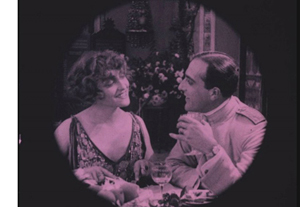
Even more incomplete was Una notte a Calcutta (dir. Mario Caserini, 1918, right). Only a couple of scenes totaling eleven minutes survive, but they show off the talents of diva Lyda Borelli and suggest that the settings and costumes for this otherwise lost film were impressive.
The emphasis on color promises to continue next year, as with the hints dropped concerning further early Japanese color films to come on a second program.
The auteur of the year
Following a long-established tradition, the festival includes a retrospective of a Hollywood director, Leo McCarey. Having seen quite a few of the films on offer, I haven’t followed this thread faithfully. I fondly remembered Ruggles of Red Gap (1935) from a single 16mm viewing many years ago, though, and decided to watch it. I was glad I did. For a start, it was a mint 35mm print and a joy to watch. Moreover, I had remembered Charles Laughton’s performance as hopelessly mannered and eccentric. This time I caught many of the subtle gestures and glances that he used to convey the thoughts of a character who, at least in the early scenes, speaks little and then only very formally. The supporting cast is ideal for the witty script that condenses the overly long original novel.
McCarey got his start by directing two-reelers with some of the best second-tier slapstick comics of the 1920s, including Charlie Chase, Max Davidson, and Mabel Normand. One program of three showed off each in turn. The Uneasy Three (1925) casts Chase as an aspiring burglar invading a society party with two partners-in-crime sneaking in by impersonating a trio of classical musicians. Don’t Tell Everything (1927) has Max Davidson marrying a wealthy widow, only to have his obnoxious freckled son (Spec O’Donnell, as always) worm his way into the household by disguising himself as a surprisingly convincing maid. Finally, Should Men Walk Home? (1927) teams Creighton Hale and Mabel Normand in another stealing-a-brooch-from-a-society-party plot. Normand gives a late, great performance. (Imdb lists this as her penultimate role.)
The World Cinema Project restores another three
I always try to see the latest films restored by the World Cinema Project, which aims to save important movies made in countries that do not have the archives or resources to protect them. This year the films were La noire de …, Sembène’s first feature, Ahmed El Maanouni’s Moroccan film, Alyam Alyam (aka Oh the Days, 1978), and Lino Broca’s Insiang (the Philippines, 1976).
La noire de … deals with the post-colonialist effects of French rule in Senegal, with the heroine Diouana (below) eager to visit the France of her dreams. Once there, she is never allowed to leave the apartment of the French couple who has employed her; they told her she was to care for their children, but she is relegated to household tasks.
Our friend Peter Rist recalled seeing this film with a color sequence, but this was not included in the restoration. The informative panel introduction to the film, led by Cecilia Cenciarelli of Project, revealed that a sequence showing Diouana’s arrival in Marseilles was shot in color. The idea was to show the heroine’s hopeful view of her new country, contrasting with the black and white of the rest of her film as that hope dissipates. Cenciarelli said that there is no clear evidence that Sembène intended this color scene to be part of the final film. If it survives, it would make a valuable supplement to a future home-video release.
Going from Ruggles of Red Gap to Insiang was an experience in contrasts of the sort one often has here. Insiang is the film’s heroine, a laundress living in a Manila slum. The film was shot in a poverty-stricken area and incorporates many candid shots of children playing in mud and puddles. Much of the action involves shiftless young men who drink and gossip as the women around them do most of the work (above). Against this reality-based milieu, Brocka sets an extremely melodramatic story of Insiang and her mother competing for the affections of the same wastrel. One suspects that Brocka was trying to make his grim film palatable to a broader audience, but the film was a financial failure.
Maanouni took a very different approach for Alyam Alyam. There is a minimal plot about a young peasant earning money to travel to France or the Netherlands for work. This character and his mother and grandfather, 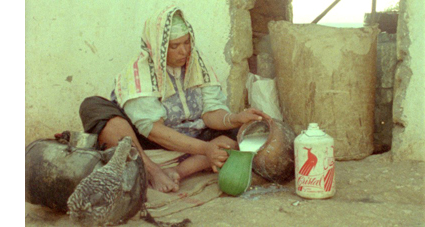 who strenuously object to be his perceived desertion of them, appear at intervals through the film. Most of the scenes, however, are poetic views of village life, evoking both the back-breaking labor of the countryside and the beauty of its traditions.
who strenuously object to be his perceived desertion of them, appear at intervals through the film. Most of the scenes, however, are poetic views of village life, evoking both the back-breaking labor of the countryside and the beauty of its traditions.
In introducing the film, Maanouni said that he wanted to question why Morocco cannot provide the opportunity and incentive to keep young people from leaving. By emphasizing a lyrical depiction of the countryside and the impossibility of earning anything but a subsistence wage, he makes vivid the sad waste of the nation’s potential–a problem that has persisted for decades since the film was made.
The unending march of restoration
The one theme that persists from festival to festival is the thread of re-discovered and restored films. The screenings and, increasingly, the panels and lectures on archival methods, reminds us of how expensive and difficult this process is and how much work goes on each year.
The main film I have seen so far among the restorations is Julien Duvivier’s little-known 1939 film, La fin du jour. (A restoration of his more famous Le belle equipe, 1936, was also shown this year.) It’s the story of a group of actors living in a chateau supported by private charities and dedicated to taking care of aging thespians. They play out their individual dramas against the backdrop of a threatened bankruptcy of the home and a dispersal of its inhabitants to various government hospitals across the country.
There are three primary stories. Cabrissade (Michel Simon) maintains his claim to dramatic fame despite having been only an understudy, and that to a star who never missed a performance. Now entering the home and disturbing its equilibrium is Saint-Clair (Louis Jouvet), an unrepentant seducer and liar. Marny (the less famous but excellent Victor Francen) is a successful actor depressed over his wife’s death, perhaps by suicide, after she ran away with Saint-Clair.
There are numerous small plotlines played out by skilled character actors of the era. The ensemble is interwoven in an impressive example of the “Cinema of Quality,” here practiced by scriptwriter Charles Spaak in collaboration with Duvivier. The tale briefly becomes maudlin toward the end but overall is a touching and often funny depiction of old age among a group particularly reluctant to face that time of life.
In the second half of Il Cinema Ritrovato, I’m concentrating on a small retrospective of Iranian cinema of the 1960s and 1970s, as well as a long-awaited restoration of Satyajit Ray’s Apu Trilogy.
David’s book Figures Traced in Light discusses how The Song of Home displays Mizoguchi’s early mastery of Hollywood-style staging and cutting, before he went on to try considerably different techniques.
Thanks to Manfred Polak for a correction regarding La noire de … His blog entry on the film is here.
La noire de… (Ousmane Sembène, 1966).












